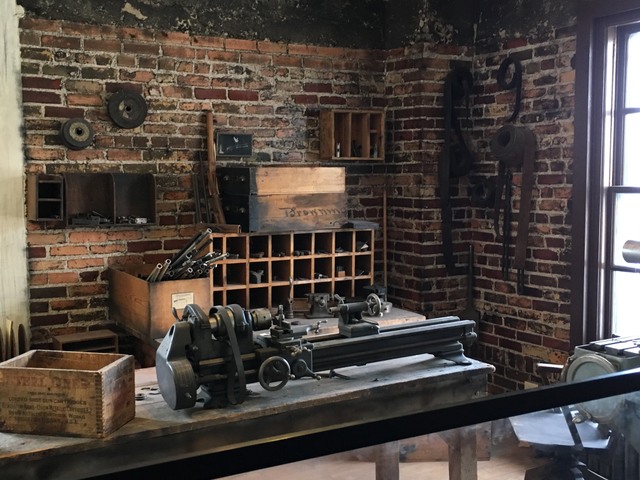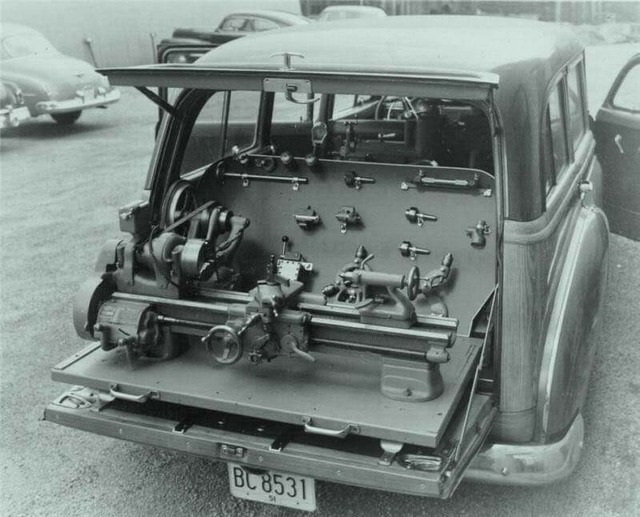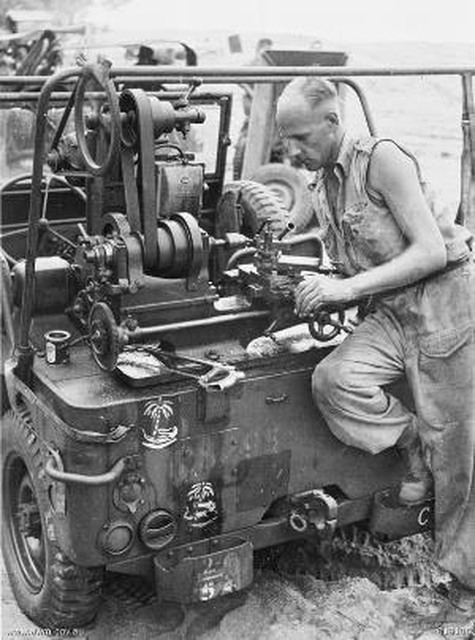So for those who remember my trip to Michigan last winter to pick up a cannon tube... here is an update.
I stripped off most of the %$#@ing Powder coating and underneath it's not nearly as pitted as I thought. Some... and a couple of casting flaws. But the black powder coat made everything look far worse than it was.
The big problem was the trunnions. Badly damaged, out of true, deeply pitted. No way were they going to work smoothly in a newly-machine pair of irons.
So after much contemplating about how to fix them (they must be exactly in line and perfectly round) I came up with the idea to make a fixture and use my Bridgeport to turn first one, then the other.. exactly in line. The 'standard' size for this class of tube is 2.75", which is the proper 'Prairie Carriage' and small carriage size. I ended up sleeving the trunnions because they were damaged enough that I had to cut to about 2.6" plus change. So the sleeves, to keep them thick enough, are 2.877" diameter. And I'll cut my trunnion irons slightly over to fit them. But the diameters and strength are right on. And the pair are within .006" across the entire span of 13 inches, tip to tip.
A few pictures... how to use a Bridgeport creatively!

Making the tool to hold the trunnions. Made a bit oversize... more on that later. This was just cutting a 1" plate with a radius in which I can weld the actual recepticle for the trunnions.

Tool/fixture welded up and ready for final boring in place on the mill table.

Final boring the fixture, to ensure it was exactly true on the mill table. I also made an extension for my boring head, which allowed me to turn the tool 'inward' and shape the outside diameter of the trunnion... more on that later. The tool and the 'extension' tool me about 4 hours of machining last weekend.

Great investment... SkyCrane which will lift 500 lbs onto a mill or a lathe. Mounts on the table. I use it to fit the 'big' chucks on to my LeBlond. With a bit of adapting, it also fits the Bridgeport. These things are invaluable when working on large objects! Like 500 lb-ish... cannon barrels.
First trunnion was fitted with some shims to ensure it slipped into the tool with no perceptible movement. And the barrel was fixtured to the table.

Barrel being lowered into the fixture or the first time. Prior to machining the first trunnion. It's rough. See a bit later for before/after. Did I mention that this is a huge-a**ed piece of cast iron!

Tool at work on a plunge cut to start rounding/repairing the trunnion. It took many passes as the trunnions were in bad shape. I cut them to about 2.6" and then fitted steel sleeves with about .001" clearance and an anaerobic adhesive to hold them. I debated pinning, but did not see a need.

Before/after picture of Trunnions. Top one is repaired, second one is ready to get put 'facing upwards' for its repair.

Repaired second trunnion as I am lifting the tube out of the fixture to put it on the floor. Next week, it will go on the big lathe, not for turning but so that I can easily rotate it while grinding smooth and repairing the casting. If you look at one of the pictures, you can see a fitting that I have put in the bore that will let the tube rotate in a large roller-bearing steady-rest. That will let me rotate slightly while using a power grinder to re-smooth and polish the barrel before painting in stove black.
I'll also fit a new copper vent liner next week and make a tool for removing/refitting. I have the copper. Just need to make the new liner.
Onwards and upwards... This one ought to be on its new carriage and ready to fire in the spring.
Also working on two more.... damn... too many projects.
Cheers,
Sirhr
I stripped off most of the %$#@ing Powder coating and underneath it's not nearly as pitted as I thought. Some... and a couple of casting flaws. But the black powder coat made everything look far worse than it was.
The big problem was the trunnions. Badly damaged, out of true, deeply pitted. No way were they going to work smoothly in a newly-machine pair of irons.
So after much contemplating about how to fix them (they must be exactly in line and perfectly round) I came up with the idea to make a fixture and use my Bridgeport to turn first one, then the other.. exactly in line. The 'standard' size for this class of tube is 2.75", which is the proper 'Prairie Carriage' and small carriage size. I ended up sleeving the trunnions because they were damaged enough that I had to cut to about 2.6" plus change. So the sleeves, to keep them thick enough, are 2.877" diameter. And I'll cut my trunnion irons slightly over to fit them. But the diameters and strength are right on. And the pair are within .006" across the entire span of 13 inches, tip to tip.
A few pictures... how to use a Bridgeport creatively!

Making the tool to hold the trunnions. Made a bit oversize... more on that later. This was just cutting a 1" plate with a radius in which I can weld the actual recepticle for the trunnions.

Tool/fixture welded up and ready for final boring in place on the mill table.

Final boring the fixture, to ensure it was exactly true on the mill table. I also made an extension for my boring head, which allowed me to turn the tool 'inward' and shape the outside diameter of the trunnion... more on that later. The tool and the 'extension' tool me about 4 hours of machining last weekend.

Great investment... SkyCrane which will lift 500 lbs onto a mill or a lathe. Mounts on the table. I use it to fit the 'big' chucks on to my LeBlond. With a bit of adapting, it also fits the Bridgeport. These things are invaluable when working on large objects! Like 500 lb-ish... cannon barrels.
First trunnion was fitted with some shims to ensure it slipped into the tool with no perceptible movement. And the barrel was fixtured to the table.

Barrel being lowered into the fixture or the first time. Prior to machining the first trunnion. It's rough. See a bit later for before/after. Did I mention that this is a huge-a**ed piece of cast iron!

Tool at work on a plunge cut to start rounding/repairing the trunnion. It took many passes as the trunnions were in bad shape. I cut them to about 2.6" and then fitted steel sleeves with about .001" clearance and an anaerobic adhesive to hold them. I debated pinning, but did not see a need.

Before/after picture of Trunnions. Top one is repaired, second one is ready to get put 'facing upwards' for its repair.

Repaired second trunnion as I am lifting the tube out of the fixture to put it on the floor. Next week, it will go on the big lathe, not for turning but so that I can easily rotate it while grinding smooth and repairing the casting. If you look at one of the pictures, you can see a fitting that I have put in the bore that will let the tube rotate in a large roller-bearing steady-rest. That will let me rotate slightly while using a power grinder to re-smooth and polish the barrel before painting in stove black.
I'll also fit a new copper vent liner next week and make a tool for removing/refitting. I have the copper. Just need to make the new liner.
Onwards and upwards... This one ought to be on its new carriage and ready to fire in the spring.
Also working on two more.... damn... too many projects.
Cheers,
Sirhr













